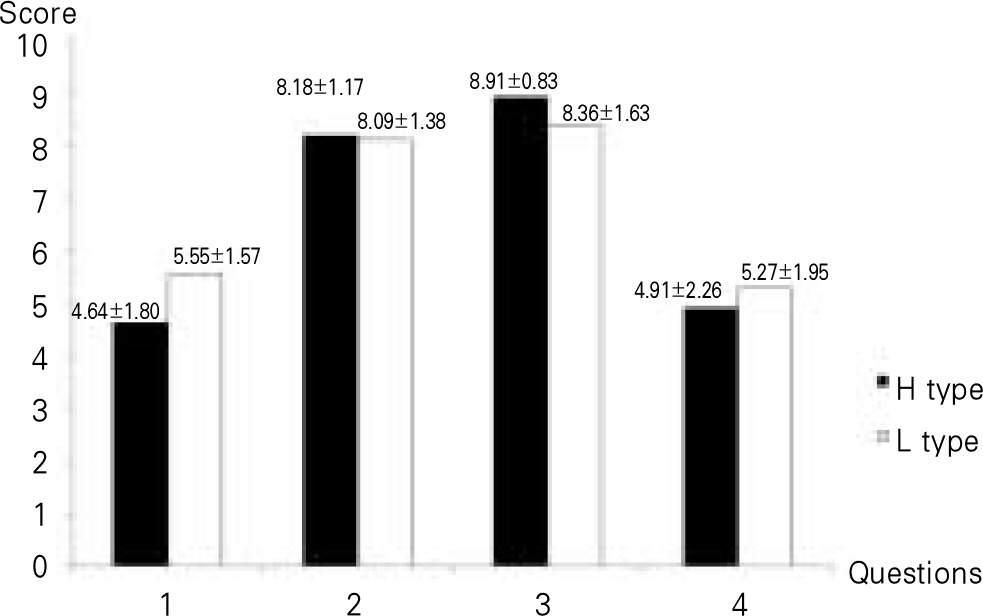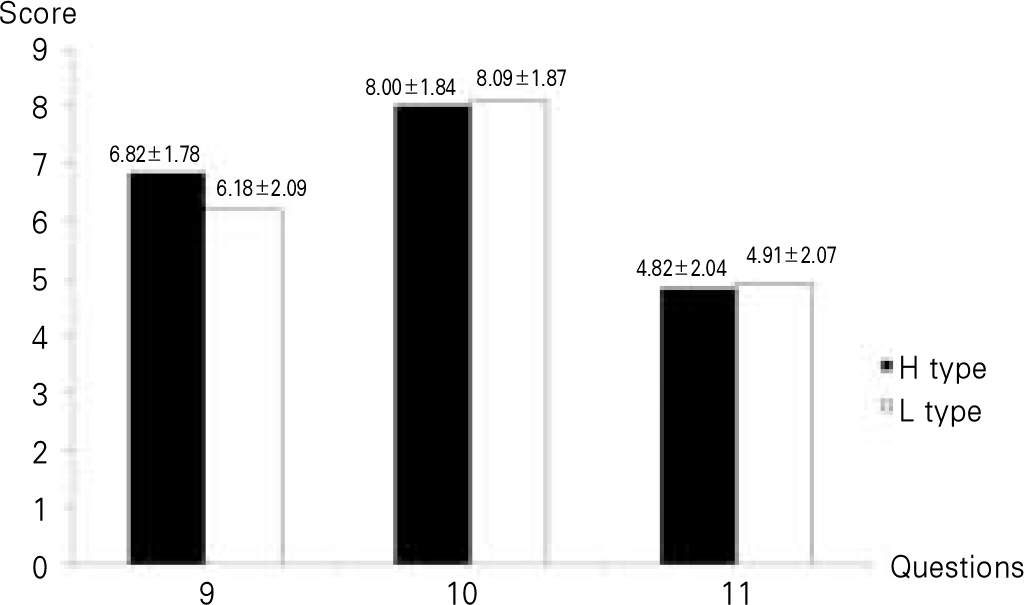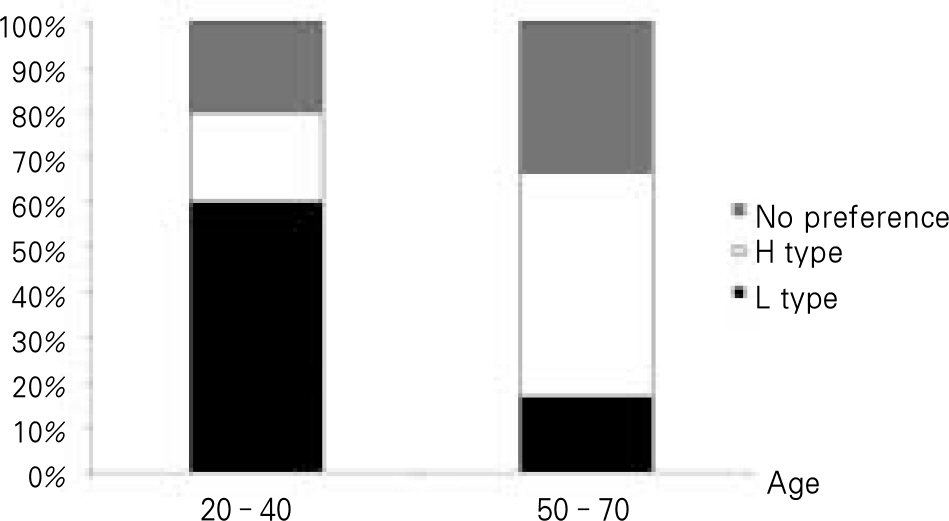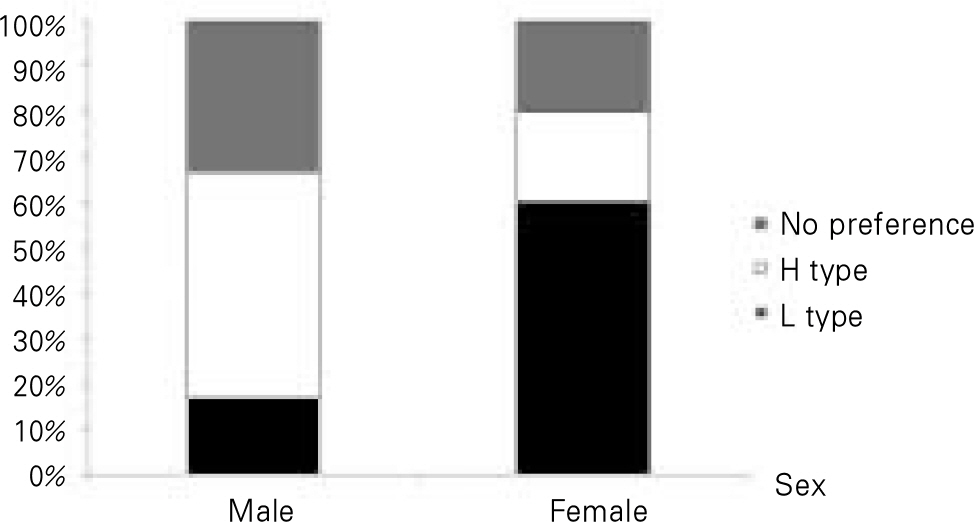J Korean Acad Prosthodont.
2010 Jan;48(1):41-47. 10.4047/jkap.2010.48.1.41.
Patients' satisfaction on the obturators with different extension heights into defects after maxillectomy
- Affiliations
-
- 1Department of Prosthodontics, School of Dentistry, Seoul National University, Seoul, Korea.
- 2Department of Prosthodontics, The Institute of Oral Health Sciences, Samsung Medical Center, College of medicine, Sungkyunkwan University, Seoul, Korea. koprosth@unitel.co.kr
- KMID: 2000319
- DOI: http://doi.org/10.4047/jkap.2010.48.1.41
Abstract
- PURPOSE
The purpose of this study was to compare the functional abilities of the low bulb obturators with those of high bulb obturators in terms of patients' evaluation. MATERIAL AND METHODS: This study included 11 maxillectomy patients who underwent postoperative prosthodontic rehabilitations. Two obturators of the same design except for different bulb heights, were fabricated for each of the maxillectomy patient. After two months of alternate use, the functions of the obturators were measured by investigating the patients' subjective evaluations in terms of convenience, speech, nasality, leakage, and mastication and identifying their preferred prostheses. Wilcoxon signed rank test was used as a statistical method (P < .05).
RESULTS
There were no significant differences in patient evaluations of low and high bulb obturators (P >.05). And patients' preferences varied.
CONCLUSION
In extreme situation such as in mouth opening limitation, the use of low bulb obturators can be recommended and result in comparable speech function to that of obturators with high lateral walls.
Keyword
Figure
Cited by 1 articles
-
Use of artificial palate for improving facial support in the fabrication of a maxillary obturator: A case report
Hee-Kyoung Yoon, Hee-Seong Hwang, Chul-Hoon Kim, Jung-Han Kim, Bok-Joo Kim
J Korean Acad Prosthodont. 2017;55(3):319-324. doi: 10.4047/jkap.2017.55.3.319.
Reference
-
1.Lang BR., Bruce RA. Presurgical maxillectomy prosthesis. J Prosthet Dent. 1967. 17:613–9.
Article2.Desjardins RP. Obturator prosthesis design for acquired maxillary defects. J Prosthet Dent. 1978. 39:424–35.
Article3.Robinson JE. Prosthetic treatment after surgical removal of the maxilla and floor of the orbit. J Prosthet Dent. 1963. 13:178–84.
Article4.Beumer J., Curtis TA., Marunick MT. Maxillofacial Rehabilitation: Prosthodontic and Surgical Considerations. St. Louis: Elsevier;1996. p. 225–84.5.Kornblith AB., Zlotolow IM., Gooen J., Huryn JM., Lerner T., Strong EW., Shah JP., Spiro RH., Holland JC. Quality of life of maxillectomy patients using an obturator prosthesis. Head Neck. 1996. 18:323–34.
Article6.Aramany MA., Drane JB. Effect of nasal extension sections on the voice quality of acquired cleft palate patients. J Prosthet Dent. 1972. 27:194–202.
Article7.Adisman K. Removable partial dentures for jaw defects of the maxilla and mandible. Dent Clin North Am. 1962. 849–70.8.Ackerman AJ. The prosthetic management of oral and facial defects following cancer surgery. J Prosthet Dent. 1955. 5:413–32.
Article9.Oki M., Iida T., Mukohyama H., Tomizuka K., Takato T., Taniguchi H. The vibratory characteristics of obturators with different bulb height and form designs. J Oral Rehabil. 2006. 33:43–51.
Article10.Zarb GA. The maxillary resection and its prosthetic replacement. J Prosthet Dent. 1967. 18:268–81.
Article11.Brown KE. Peripheral consideration in improving obturator retention. J Prosthet Dent. 1968. 20:176–81.
Article12.Sharry JJ. Extensions of partial denture treatment. Dent Clin North Am. 1962. 821–35.13.Kobayashi M., Oki M., Ozawa S., Inoue T., Mukohyama H., Takato T., Ohyama T., Taniguchi H. Vibration analysis of obturator prostheses with different bulb height designs. J Med Dent Sci. 2002. 49:121–8.14.Kim HW., Kim CW., Kim YS. A clinical study on the satisfaction of complete denture patients. J Korean Acad Prosthodont. 1995. 33:440–51.15.Tanaka H. Speech patterns of edentulous patients and morphology of the palate in relation to phonetics. J Prosthet Dent. 1973. 29:16–28.
Article16.Petrovic ´A. Speech sound distortions caused by changes in complete denture morphology. J Oral Rehabil. 1985. 12:69–79.
Article17.Oral K., Aramany MA., McWilliams BJ. Speech intelligibility with the buccal flange obturator. J Prosthet Dent. 1979. 41:323–8.
Article18.Lee SW., Chung MK. Factors influencing paitent satisfaction with complete dentures. J Korean Acad Prosthodont. 2005. 43:633–49.19.Silverman S., Silverman SI., Silverman B., Garfinkel L. Self-image and its relation to denture acceptance. J Prosthet Dent. 1976. 35:131–41.
Article20.Barenthin I. Dental health status and dental satisfaction. Int J Epidemiol. 1977. 6:73–9.
Article21.Kim HW., Kim CW., Kim YS. A clinical study of the satisfaction of complete denture patients. J Korean Acad Prosthodont. 1995. 33:440–52.22.Langer A., Michman J., Seifert I. Factors influencing satisfaction with complete dentures in geriatric patients. J Prosthet Dent. 1961. 11:1019–31.
Article23.Carlsson GE., Otterland A., Wennstro ¨ m A., Odont D. Patient factors in appreciation of complete dentures. J Prosthet Dent. 1967. 17:322–8.
Article
- Full Text Links
- Actions
-
Cited
- CITED
-
- Close
- Share
- Similar articles
-
- Fabrication of implant-associated obturator after extraction of abutment teeth: a case report
- Implant assisted obturator in patient after maxillectomy: a case report
- Creating a digitized database of maxillofacial prostheses (obturators): A pilot study
- Quality of life after prosthodontic rehabilitation in patients with bilateral total maxillectomy due to COVID-19-associated mucormycosis of the maxilla
- Prosthetic rehabilitation using an obturator in a fully edentulous patient who had partial maxillectomy






